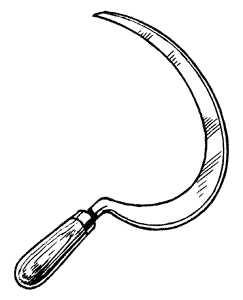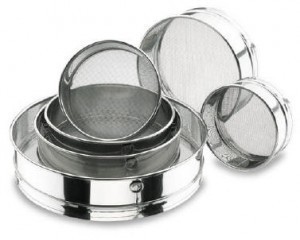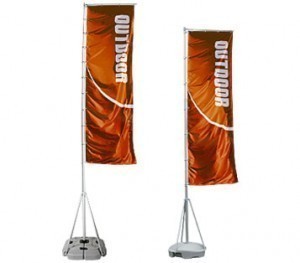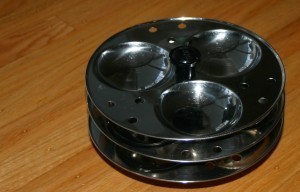What is the Size of a Sickle?
The size of a sickle varies. There are some sickles with 6.5  inch blades, while others have 4.5 inch blades. Many of the sickles sold today can be purchased in packs. Some of them contain sickles with different dimensions.
inch blades, while others have 4.5 inch blades. Many of the sickles sold today can be purchased in packs. Some of them contain sickles with different dimensions.
Basic Facts about the Sickle
The sickle is a tool used for slicing tall weeds, vines and brushes. The tool is also used for removing plants that get in the way of land tending. This tool is hand held and has a curved blade.
Aside from those mentioned, the sickle is also used for harvesting grain crops. The inside of the curve is very sharp. This allows the individual to swing or draw the blade against the crop’s foundation. This allows the sickle to slice and catch simultaneously.
Usage
The material may be sliced in different ways. For example, the material can be held in one hand, left free or secured in place by a stick. If the material is held together, the sickle is moved right to left for a left hand user. If freely used, the tool is swung in the opposite direction.
Types
It isn’t just the size of a sickle that varies, but also the design. Many variations exist including the bagging hook, brishing hook, reaping hook, slash-hook, rip-hook, swap hook and grass hook. However, the blade is always cranked to a side. This design allows the blade to be kept near the ground. Sickles designed for reaping are serrated.
Origin
There are many theories but some are suggesting that the tool may have been developed in the Far East. There is also some evidence that the Pacific island inhabitants used a type of cutting grass tool similar to the sickle.
Some of the tools that have been discovered in New Mexico are constructed from mountain sheep horns. Other ancient sickle-like tools were made from deer mandible. Based on the accounts of natives, these tools were utilized for cutting grass.
The dimensions of these sickles vary, but many are 13 to 16 inches from end to end. Excavations in eastern Arizona have unearthed sickles made of wood. In some South American cultures, the sickle was employed for harvesting rice.
While the size of a sickle varies, usage has remained unchanged for a long time. Although it has been superseded in some ways by the scythe, the tool continues to be used by farmers in many countries around the world.





